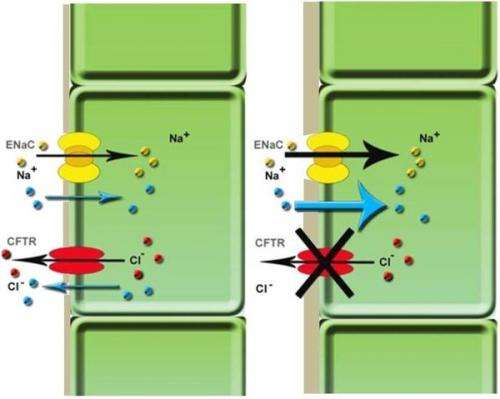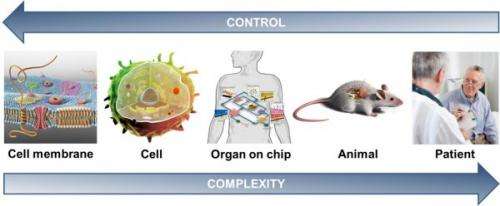Researchers develop new chip for testing medicines

University of Twente doctoral degree candidate Verena Stimberg has developed a chip that can improve research into diseases, medicines and the possible toxicity of nanoparticles. The chip contains a man-made version of a cell membrane, on which you can examine diseases where ion channels in cell membranes play a role. With the chip you can test drugs against cystic fibrosis or conduct research into diseases such as Parkinson's, cancer, depression, epilepsy, multiple sclerosis and diabetes. The chip means that fewer trials on animals and people will probably be required in the future. Stimberg conducted her research within the MIRA and MESA+ research institutes at the University of Twente.
The ion channel, a protein which is located in the cell membrane (the outer surface of a cell), ensures that mineral salts (ions) can flow in and out of the cell. A non-functioning or poorly functioning ion channel causes diseases such as cancer, depression, schizophrenia, epilepsy, multiple sclerosis, diabetes, asthma, cardiac arrhythmia, kidney stones, Crohn's disease and osteoporose. Live cells are normally required for research into the ion channel. With Stimberg's chip you imitate a cell membrane. Within a short time you can examine many different diseases and medicines on it, so that fewer laboratory animals and test subjects are likely to be needed in the future. This depends upon the application for which you use it. Up until now for example, cosmetics were tested a lot on animals; the chip may be a good alternative for this. With the chip, you can measure both electrically and optically (with a microscope) whether the mineral salts can flow in and out of a cell. You can then measure with the chip whether the addition of specific medicines improves the inflow and outflow. The chip, made of glass and Teflon, measures just one by two centimetres.
Toxicity of Nanoparticles
Nanoparticles are used everywhere: they are found, for example, in sunscreen, food, detergents and clothing. Because nanoparticles are relatively new, there are not yet any good tests to examine whether they are harmful. With this chip, you can test the effect of nanoparticles on cell membranes.

Future
Stimberg: "We are very pleased that the chip works well. This was a big step. Therefore, we now possess a platform for all kinds of research. We are now trying to extend the chip so that we can perform more measurements. Two companies are already interested. The chip has the potential to be launched on the market as a product for various applications. Depending upon the application, that could still take at least ten years."
Provided by University of Twente















